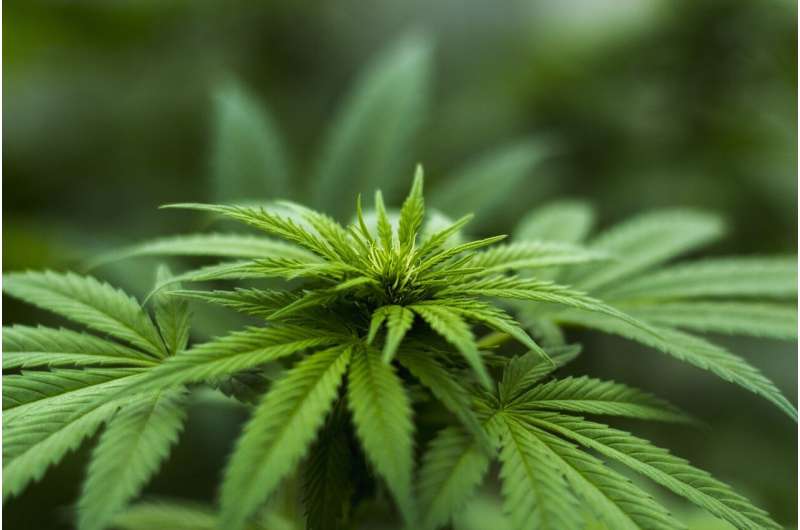Recreational marijuana access reduces demand for prescription drugs

Legalization of recreational marijuana reduces demand for costly prescription drugs through state Medicaid programs, according to an analysis by a Cornell researcher and a collaborator.
When states legalize marijuana, the volume of prescriptions within the drug classes that align with the medical indications for pain, depression, anxiety, sleep, psychosis and seizures significantly decline, the researchers found.
Shyam Raman, a doctoral student in the Cornell Jeb E. Brooks School of Public Policy, and Indiana University doctoral student Ashley Bradford conducted the research. Their article, "Recreational Cannabis Legalizations Associated with Reductions in Prescription Drug Utilizations Among Medicaid Enrollees," published April 15 in the journal Health Economics.
Most cannabis research has focused on the impact of medical marijuana on demand for prescription drugs or the impact of recreational use legalization on opioid demand. This is among the first studies to focus on the impact of legal personal-use cannabis on a broad range of prescription drugs.
"These results have important implications," Raman said. "The reductions in drug utilization that we find could lead to significant cost savings for state Medicaid programs. The results also indicate an opportunity to reduce the harm that can come with the dangerous side effects associated with some prescription drugs."
Raman and Bradford based their study on an analysis of data retrieved from the Centers for Medicare and Medicaid Services in all 50 states from 2011 to 2019, a period that saw growth in the number of states permitting personal use of marijuana.
About 40 states have legalized medical marijuana that must be prescribed by a doctor. So far, about 20 states have legalized personal-use cannabis for all adults, but that number is likely to rise. In those states, Raman and Bradford found a meaningful change in the demand for drugs used to treat sleep and anxiety disorders but no real impact on drugs used to treat nausea.
Raman and Bradford caution that cannabis use is not itself without harm, noting the many studies that associate it with a potential triggering of anxiety and psychoses such as schizophrenia. Also, patients who use marijuana to treat their medical conditions may be shifting away from visiting their doctor and therein creating discontinuities in primary care.
More information: Shyam Raman et al, Recreational cannabis legalizations associated with reductions in prescription drug utilization among Medicaid enrollees, Health Economics (2022). DOI: 10.1002/hec.4519




















